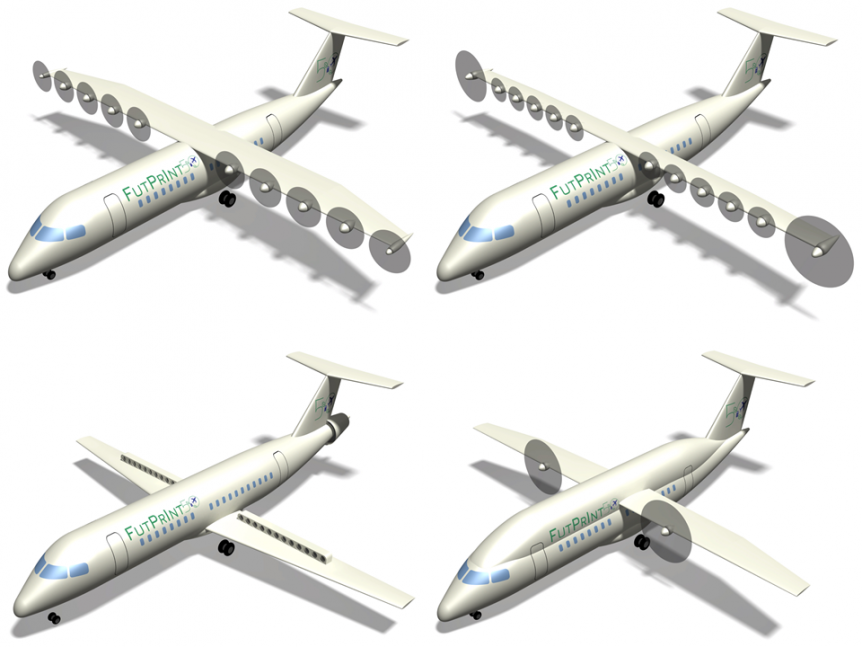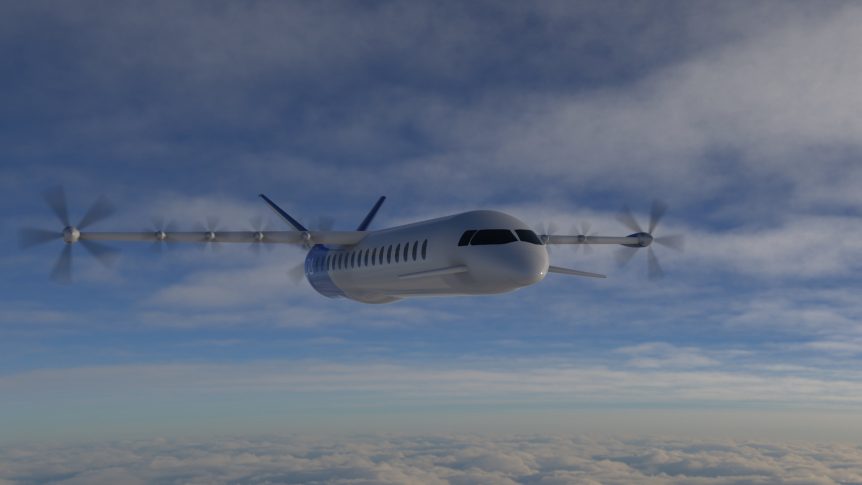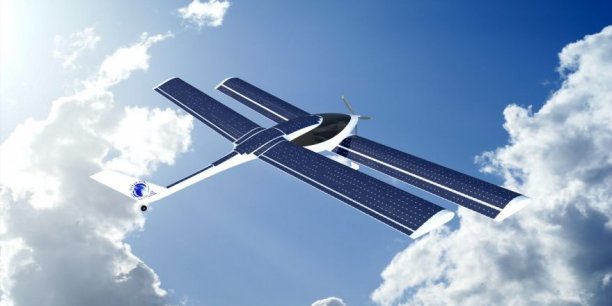Researchers from the German Aerospace Center (Deutsches Zentrum für Luft- und Raumfahrt; DLR) conducting research into the potential of new types of design have crafted novel configurations for future flight. The DRL and BDLI (German Aerospace Industries Association or Bundesverband der Deutschen Luft- und Raumfahrtindustrie) have published a white paper: “Zero Emission Aviation – Emissionsfreies Fliegen” explicating these configurations. Surprisingly, one of their major findings is that “Electric flight enables lighter aircraft with smaller wings and distributed propulsion systems.” Battery weight has caused MagniX and Ampaire to reduce the number of passengers or the cargo loads on conversions of existing airframes. To counter those issues, “An EU research project is investigating the potential for new propulsion systems and aircraft concepts.” Obviously, these new concepts will need to take advantage of advanced materials to lower airframe weight. Hybrids and Hydrogen Thousands of airliners parked in dry desert locations highlight how the COVID crisis has affected air travel. Despite the ongoing interlude …
Dante AeroNautical Distributes Power
In a dramatic rendering, Dante AeroNautical shows its DAX-19, a regional airliner that will distribute power along its wings, much like NASA’s X-57 Maxwell. Dante describes the craft as representing, “The regional electric air travel of the future.” (In Dante’s web site, the triangle in place of the conventional “a” is the alchemical symbol for fire, or a clever marketing type’s attempt to draw our attention.) Helmut Penner, writing in Cockpit magazine, gives us the following: “Typically, small airlines make their aircraft purchases from major manufacturers, including the still-young Spanish low-cost airline Voltea, which operates 14 A319s and 17 Boeing 717s. But now [the company] is aiming for an ambitious project with the Dante AeroNautical, which is also based in Spain. Already in the middle of the next decade, a hybrid aircraft for 19 passengers to be developed will be used for short-haul flights.” A Small Airline Checks In Voltea “will work actively with Dante Aeronautical to develop this hybrid-electric …
A Solar-Algae Hybrid for an Atlantic Crossing
Henri Mignet was never quite able to master an airplane with three-axis controls, and built at least seven flawed attempts at simplified controlled flight. His seminal try, the HM-8 Pou de Ciel (literally, Louse of the Sky, or more familiarly, Flying Flea) became first a matter of celebration for amateur aviators and then a cause of scandal, being banned in Britain following a series of fatal crashes. The “formula”, as proponents called Mignet’s tandem wing configuration, was sorted out after wind tunnel tests in England and America uncovered the flaw that caused the craft to pitch down in an unrecoverable dive. (For a well-illustrated history of Mignet’s design, see Henri Mignet and his Flying Fleas by Ken Ellis and Geoff Jones. Although out of print, used copies are available at Alibris and Abe Books, at higher prices than your editor paid for his new copy 25 years ago.) Later models of the formula have proven to be safe, stable fliers, …
Quiet May Be the New Black
Noisy airplanes are the bane of modern living. (Well, that and the myriad other intrusive sounds with which we are surrounded.) People can create and easily get signatures on petitions to close 70-year-old airports surrounded by 20-year-old housing developments, so General Aviation’s survival will at least partly depend on hushing our aircraft. We’ve been privileged to see and hear the passage of e-Genius, Pipistrel’s G4, and Chip Yates’ Long-EAS with a Craig Catto propeller, which emitted a barely discernible howl when it pushed the airplane at full power to a new time-to-climb Guinness record at the California State Airshow in early October 2013, reaching 500 meters (1,640 feet) in one minute, four seconds. This quest for quiet presses on the big airplane producers, too, anxious to be good neighbors and give passengers a less raucous flight. One engine make, Snecma, has been working on the problem since before 2009, when this report appeared in the blog Envirofuel. “Volvo Aero will …



